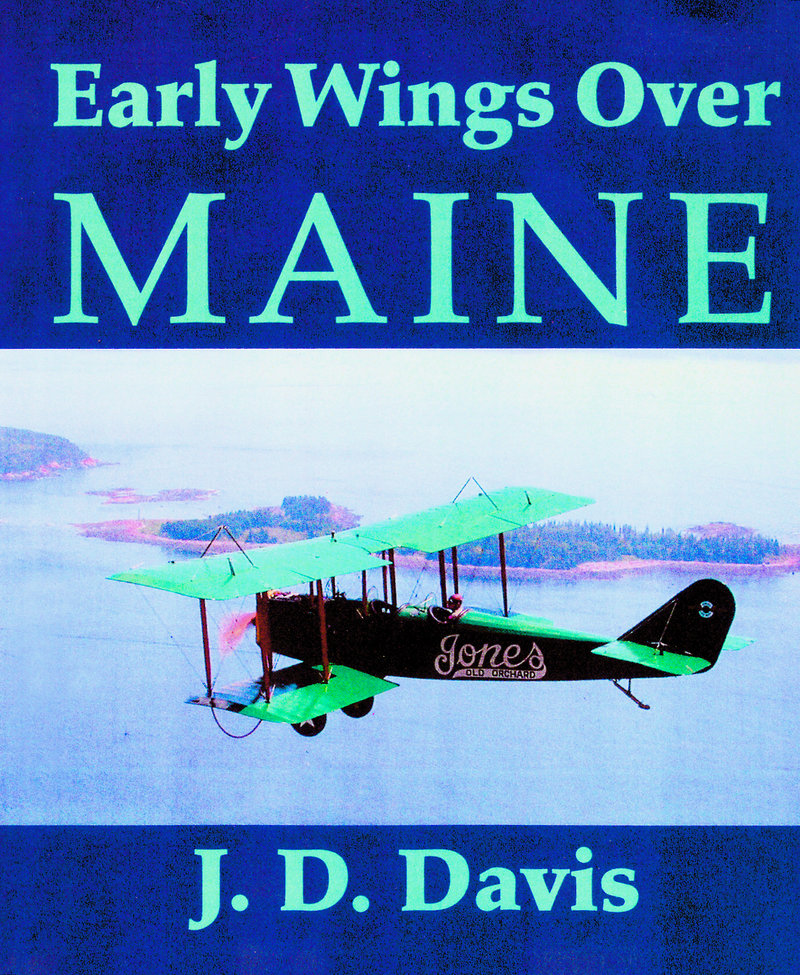One of the great gaps in our growing understanding of local and regional history is the field of aviation. It is difficult to understand why this is so; it is a colorful, important subject relatively recent in origin and there is an endless amount of source material on aircraft, airports and aviators.
Still, as far as this reviewer can discover, John D. Davis’ “Early Wings Over Maine” is the first attempt to confront a large slice of the topic in popular book form.
Of course, there have been aviation specialists dedicated to recording and preserving. Most notable perhaps are Eliot Spaulding of the Owls Head Transportation Museum, publisher of Strut & Axle, and Leo Boyle of the Maine Aviation Historical Society, longtime editor of Dirigo Flyer.
Indeed, Davis, a Freeport native and former teacher at Bowdoin College, gives due credit to these predecessors in his introduction, notes and excellent index.
Consider the arrival of pilot Harry Atwood and his Burgess-Wright float plane off Little Chebeague Island in 1912. Newspaper advertisements and word of mouth brought a flotilla of pleasure boats, work boats and excursion steamers for five and 10-minute plane rides. But there was a mechanical problem and no screwdriver. Luckily, the author’s dad, Elwyn Davis, had one on his boat earning him a free ride:
“Atwood started the engine, the propellers whirred and (the plane) skimmed across the water and into the air. Now there was all of Casco Bay below; Bustin’s Island, Little and Big Chebeague, Cliff and perhaps even Harpswell in the distance.”
Imagine the extraordinary islands of Maine, so beautiful from the land or masthead, now seen from above, from whatever angle the observer wished. As for Atwood and his plane, now equipped with skids, it was off to Poland Spring.
The reader might take a moment here to think of the many aerial photographs that now emerged, and the forts that were built to save Maine from air raids. Or of architect-artist John Calvin Stevens, who complained that speed, by way of the internal combustion engine, was ruining traditional painting. The artist was always in a rush, no longer taking time to drink in the beauty of the spot.
It was not until the late 20th century that a bird’s eye painting of the islands appeared.
Fascination with flying dominated the headlines between the wars. Kids made scrapbooks of the exploits of Lindbergh, Earhart, Nungesser and Coli, then went on to become the pilots and crews of the next war.
In the post-war era, the seat-of-the-pants approach succumbed to the corporate safety-first period of passenger jets and anonymous pilots and crews. Everyone flew and got to their destinations uneventfully, for the most part.
Davis brings the romance back with good information and first-rate images of the men, women and machines.
And, oh yes, women including Ruth Bancroft Law, in her Wright Model X, were licensed and barnstorming as early as 1913.
Davis offers a great deal about local heroes, including the great Harry Jones of Old Orchard Beach and World War I ace (and later governor) Sumner Sewall, and about trans-Atlantic attempts, the coming of commercial liners and the first Maine airports.
Certainly the groundwork has been set for all future studies in this subject.
My only criticism is that more precise birth and death dates on individuals might be included in future editions of this stimulating and much needed study.
William David Barry of Portland is a local historian who has authored/co-authored six books.
Send questions/comments to the editors.



Success. Please wait for the page to reload. If the page does not reload within 5 seconds, please refresh the page.
Enter your email and password to access comments.
Hi, to comment on stories you must . This profile is in addition to your subscription and website login.
Already have a commenting profile? .
Invalid username/password.
Please check your email to confirm and complete your registration.
Only subscribers are eligible to post comments. Please subscribe or login first for digital access. Here’s why.
Use the form below to reset your password. When you've submitted your account email, we will send an email with a reset code.